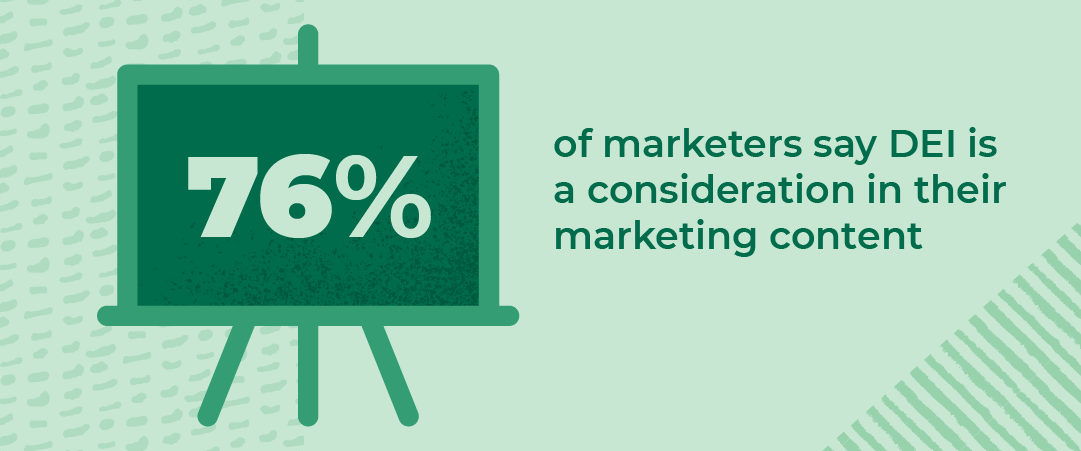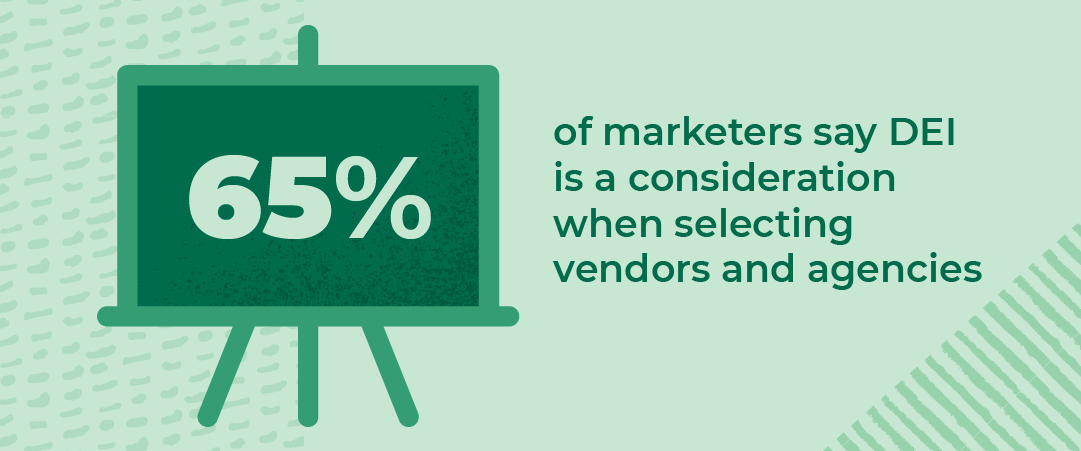For today’s companies, having a strong focus on diversity, equity, and inclusion (DEI) isn’t just a nice to have; it’s an essential part of business. One that your customers and employees -- current and future -- care about.
According to a survey by Markstein, an integrated communications agency, 70% of consumers want to see how the companies they support address social issues. And a McKinsey & Company survey found that 44% of respondents who identify as women, 45% of respondents who are ethnic or racial minorities, and 50% of LGBTQ+ respondents didn’t pursue or turned down a job offer due to the employer’s lack of an inclusive mindset.
While DEI must be woven into the fabric of organizations in order to be successful, marketers are uniquely positioned to both advocate for and enable organization-wide DEI initiatives. In fact, a June 2021 survey of 840 knowledge workers by Smartsheet found that 74% agree with the statement “DEI is important to my marketing organization.”
Here are three ways marketers can lead the effort.
Create diverse and inclusive marketing content
Marketers have made significant efforts to support or change social issues in the past year, including encouraging racial, gender, and LGBTQ+ equality. More than three-quarters say DEI is a consideration in their marketing content, according to the Smartsheet survey.
They’re also putting money behind these efforts. According to the 26th annual CMO Survey, marketers are increasing spending by 8.8% for DEI marketing initiatives that improve their brand and marketing communications.
One way to make a difference is by insisting that the imagery and photography used in campaigns as well as internal communications be representative of diverse employees and consumers. Using a digital asset management (DAM) system can help marketing teams find images more readily and track their usage to ensure a more equitable representation. Look at whose images aren’t being shared and whose stories aren’t being told. And if you can’t find images in your database or on stock photography sites, create them with photo shoots that feature people from underrepresented groups.
Also pay attention to the language used in campaigns. The CMO Survey found that two-thirds have made efforts to reduce divisive language to encourage national unity. Language is also important when you’re sharing your company’s DEI efforts internally through corporate communications as well as to the public through images and content shared on your website or social media. Creating a DEI style guide will help ensure that language remains current and is used consistently across the organization. And be sure to update your guide on a regular basis since language is constantly evolving.
Build a team of diverse voices — and listen to them
Diversifying your marketing is easier when you have a wider range of voices at the table — and listen to them. This starts with creating a safe space for team members in underrepresented groups to express their views.
Then, as you have the opportunity to build and grow your team, be proactive in sourcing underrepresented groups. First, expand your sourcing of candidates. You can actively market your company and your employment opportunities to schools with a higher number of minority students.
Consider what criteria you want in a candidate, and define skills needed for the roles instead of thinking about specific personas who might fill them. Then, work to eliminate bias in the hiring process. Humans are naturally drawn to people who are more like them, which could include gender, race, or even educational background. When hiring for your team, consider using software that anonymizes resumes, removing names, schools, and addresses that may unconsciously bias the hiring manager towards or away from certain candidates. You can also ask a more diverse set of employees to sit in on interviews. This step not only provides more feedback on candidates; it offers a way to identify an unconscious bias one decision maker may have.
Strive for diversity with vendors, too. In the Smartsheet study, 65% of marketers say DEI is a consideration when choosing external partners. Make DEI part of your criteria when soliciting bids from outside sources. And actively solicit quotes from businesses owned by underrepresented groups. Then, once you’ve created diverse teams, make sure their input is not only heard; but that their perspectives are valued and used.
Track and measure progress
Having policies and strategies in place is only half of the equation — organizations need to track progress to know if they’re moving in the right direction. The Smartsheet survey found that 64% of marketers say their marketing organization tracks and measures its DEI progress.
By gathering key performance indicators (KPIs) and sharing them with your team on a collaborative work management (CWM) platform, you give visibility to your efforts that can help drive decisions. These metrics will also provide you with areas where improvement is needed.
The KPIs you identify will depend on your business strategies. For example, you can track diversity within your content, such as in the images you’re using. A DAM platform can measure the performance of assets so you can determine which images resonate more strongly with your target market.
In your hiring efforts, you could set a goal to expand representation of diverse groups within leadership roles. You can set a goal to recruit candidates from a more diverse talent pool, or you may track the number of underrepresented business owners who place bids on projects.
DEI isn’t just the right thing to do; it benefits your business. A study by Boston Consulting Group found that companies with above-average diversity scores bring in more revenue through innovation than companies with below-average marks. Innovation and creativity are marketers’ superpowers. By leading the cause and becoming a champion for the success of their company’s DEI efforts, you can also help drive the success of your organization.




